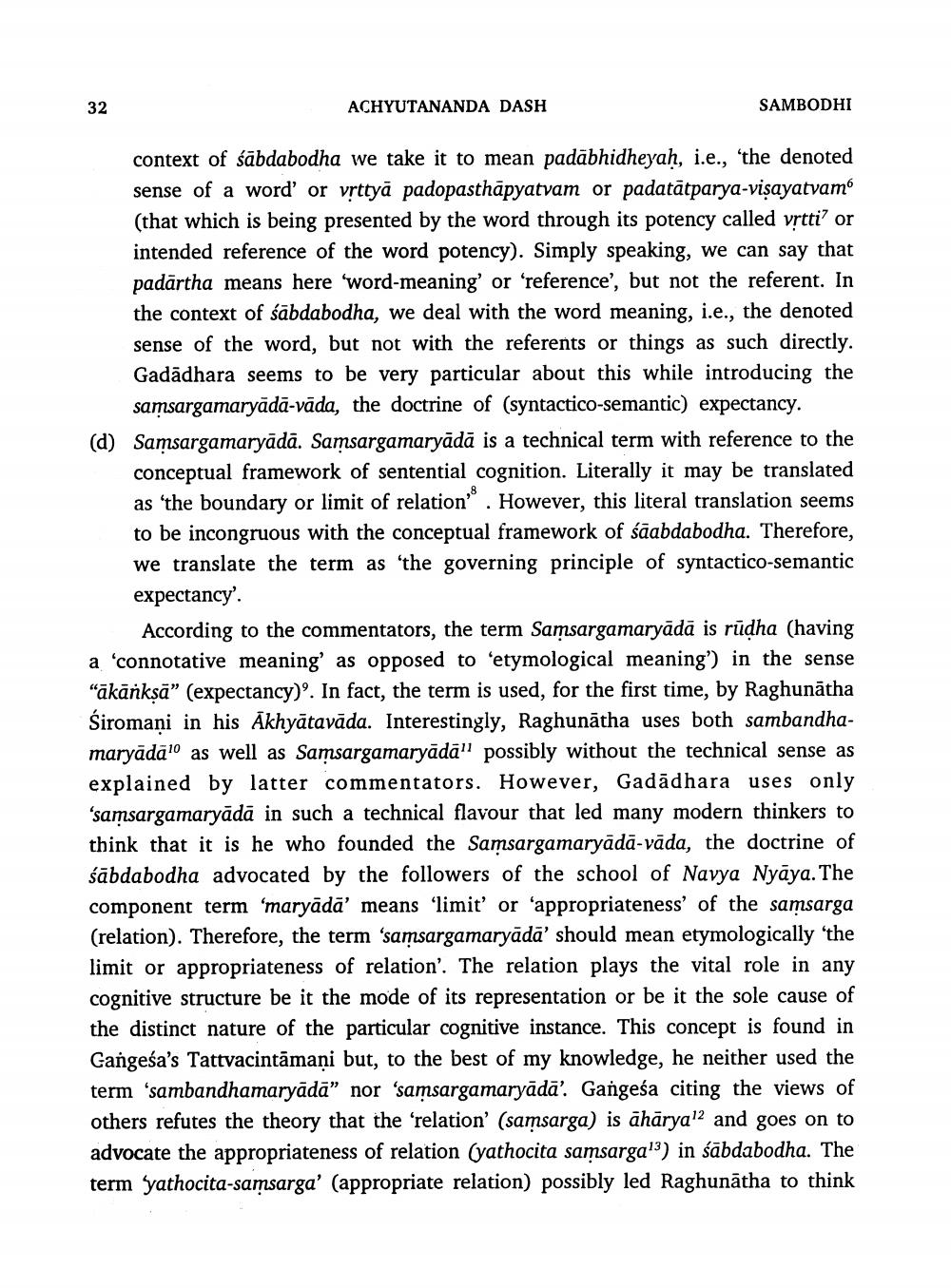________________
32
ACHYUTANANDA DASH
SAMBODHI
context of śābdabodha we take it to mean padābhidheyah, i.e., 'the denoted sense of a word' or vrttyā padopasthāpyatvam or padatātparya-visayatvam (that which is being presented by the word through its potency called vrtti? or intended reference of the word potency). Simply speaking, we can say that padārtha means here 'word-meaning' or 'reference', but not the referent. In the context of śābdabodha, we deal with the word meaning, i.e., the denoted sense of the word, but not with the referents or things as such directly. Gadādhara seems to be very particular about this while introducing the
samsargamaryādā-vāda, the doctrine of (syntactico-semantic) expectancy. (d) Samsargamaryādā. Samsargamaryādā is a technical term with reference to the
conceptual framework of sentential cognition. Literally it may be translated as 'the boundary or limit of relation . However, this literal translation seems to be incongruous with the conceptual framework of śāabdabodha. Therefore, we translate the term as 'the governing principle of syntactico-semantic expectancy'.
According to the commentators, the term Samsargamaryādā is rūdha (having a 'connotative meaning as opposed to 'etymological meaning') in the sense "ākāńksā" (expectancy)'. In fact, the term is used, for the first time, by Raghunātha Siromani in his Akhyātavāda. Interestingly, Raghunātha uses both sambandhamaryādā as well as Samsargamaryādā" possibly without the technical sense as explained by latter commentators. However, Gadādhara uses only 'samsargamaryādā in such a technical flavour that led many modern thinkers to think that it is he who founded the Samsargamaryādā-vāda, the doctrine of śābdabodha advocated by the followers of the school of Navya Nyāya. The component term 'maryādā' means “limit' or 'appropriateness of the samsarga (relation). Therefore, the term 'samsargamaryādā’ should mean etymologically 'the limit or appropriateness of relation'. The relation plays the vital role in any cognitive structure be it the mode of its representation or be it the sole cause of the distinct nature of the particular cognitive instance. This concept is found in Gangesa's Tattvacintāmani but, to the best of my knowledge, he neither used the term 'sambandhamaryādā” nor 'samsargamaryādā”. Gangeśa citing the views of others refutes the theory that the relation' (samsarga) is ahāryal and goes on to advocate the appropriateness of relation (yathocita samsarga"3) in śābdabodha. The term yathocita-samsarga' (appropriate relation) possibly led Raghunātha to think




